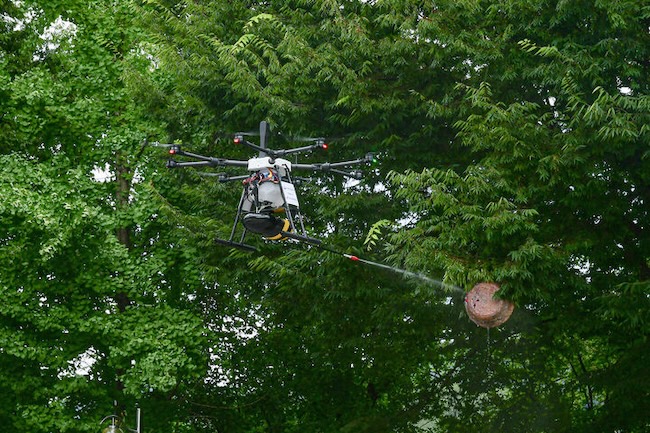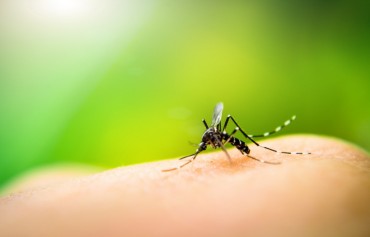HOENGSEONG, Aug. 8 (Korea Bizwire) – In the picturesque foothills of Gujeolsan Mountain, a call for help echoed through the Georyu 119 Safety Center on the morning of July 27.
A resident, trapped in their home by a menacing hornet’s nest, pleaded for assistance. This scenario, while alarming, is not uncommon in South Korea, where hornet nest removals account for about 14% of emergency rescue operations.
Enter Lee Geun-chul, a 53-year-old lieutenant at the Goseong Fire Station, who has developed an innovative solution to this persistent problem: a drone specifically designed to remove hornet nests.
“Most citizens think we respond primarily to fires, but we actually have more dispatches for hornet nests,” Lee explained. “Many of our team members get injured or stung during these operations.”
The traditional methods of nest removal are fraught with risks. Firefighters often endure scorching summer heat in full-body protective gear for over an hour, leading to frequent cases of exhaustion. When nests are beyond ladder reach, fire trucks resort to using water cannons, but many locations remain inaccessible.
Lee’s drone, equipped with a specialized insecticide sprayer, offers a safer and more efficient alternative. The device can approach nests in hard-to-reach places, spraying a precise and powerful stream of insecticide through a one-meter-long nozzle attachment.
The effectiveness of this method was dramatically demonstrated during a recent operation. Four firefighters, unable to reach a resident’s home by truck due to narrow mountain roads, carried the drone and a ladder on foot.
They encountered a volleyball-sized hornet nest atop a 15-meter pine tree, surrounded by vigilant hornets.
Recognizing the danger, the team deployed the drone. Within minutes of spraying, dozens of hornets fell to the ground, and the nest was destroyed. The entire operation, from drone launch to completion, took just over 10 minutes.
This innovation comes at a crucial time. In 2023 alone, 6,935 people in South Korea required rescue after being stung by hornets, with 11 fatalities. The first seven months of 2024 have already seen 1,681 rescue operations and three deaths related to hornet stings.
Lee’s invention could revolutionize how fire departments across the country handle these dangerous situations. “Since all fire stations are already using drones for rescue operations, I believe there won’t be significant difficulties in adopting this method for hornet nest removal,” he said.
In a similar development, Hoengseong County in Gangwon Province showcased its own novel approach to combating hornet nests, a persistent threat to beekeepers.
On August 6, the county held a demonstration of drone-based hornet nest removal techniques, drawing an audience of about 100, including beekeepers and fire officials.
The demonstration validated the safety and efficiency of a new method that employs drones equipped with specialized extermination devices to remove hornet nests.
This innovation comes at a crucial time, as species such as the Asian giant hornet and the yellow-legged hornet have been causing significant damage to apiaries in the region.
The drone-mounted device simultaneously perforates the nest and disperses an eco-friendly pesticide. The effects are rapid, with the pesticide taking action within five minutes and boasting a near-perfect extermination rate of 99%.
Advanced features such as forward collision avoidance sensors enable the drones to navigate obstacles like trees effectively. This makes the technology particularly useful for targeting nests in hard-to-reach locations, including remote mountainous areas, high-rise apartment walls, and treetops.
Professor Hong Soon-jung of Korea National College of Agriculture and Fisheries praised the innovation: “This drone-based hornet nest removal technology not only minimizes damage to beekeeping farms but also prevents public safety accidents and reduces strain on firefighting personnel.”
Kevin Lee (kevinlee@koreabizwire.com)







